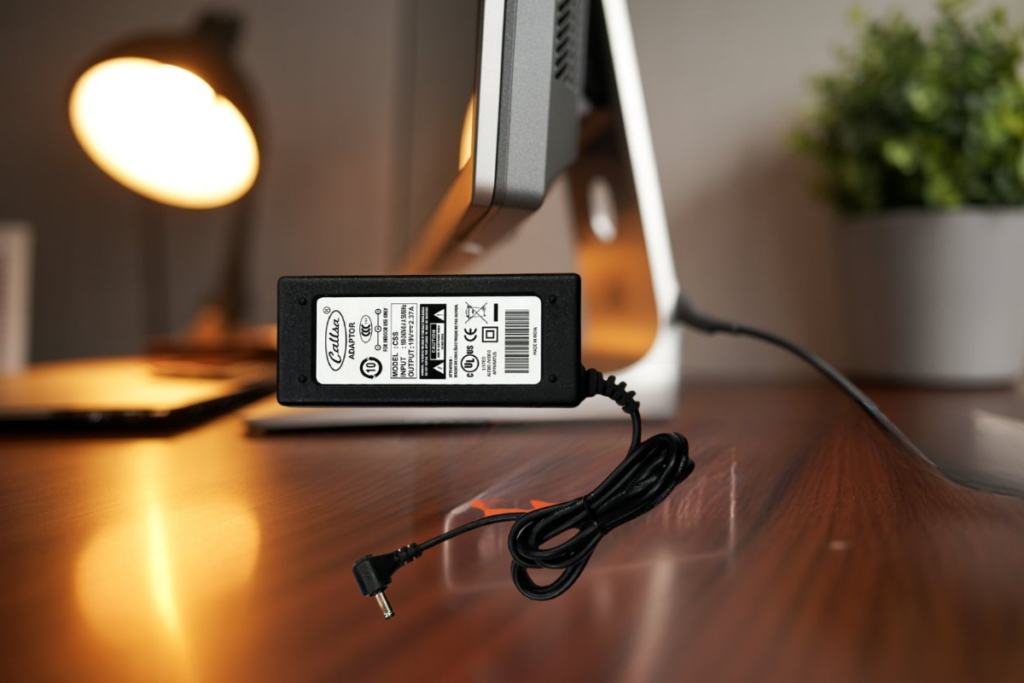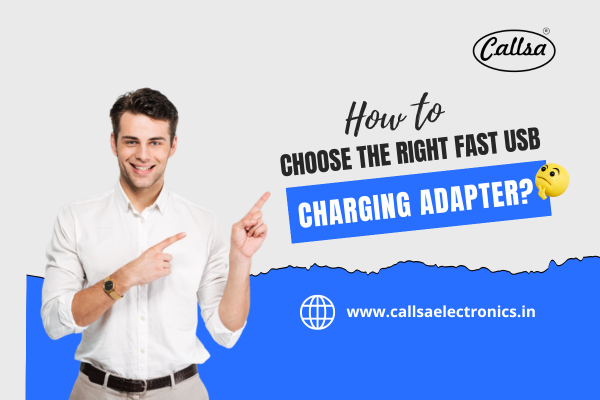Buy 19 Volt 2.37A LG Monitor Adapter – Fast & Safe Power
Using the correct power adapter for your LG monitor is more than just a technical detail—it’s essential for ensuring optimal performance, safety, and longevity of your device. An incompatible or low-quality adapter can cause flickering screens, unexpected shutdowns, or even permanent damage to your monitor. That’s why choosing the right adapter is crucial for both personal and professional setups. The 19 Volt 2.37A LG Monitor Adapter plays a vital role in this context. Specifically designed for LG monitors, this adapter provides the precise voltage and current needed for smooth operation. With a stble 19V output and 2.37A current, it ensures your monitor runs efficiently, reduces the risk of overheating, and prolongs the life of your device. Brands like Callsa offer reliable 19 Volt 2.37A LG Monitor Adapters that are rigorously tested for safety and performance, making them a trusted choice for users who value both quality and peace of mind. Read More : Affordable Power Adapters for Everyday Device What is a 19 Volt 2.37A Adapter? A 19 Volt 2.37A LG Monitor Adapter is a power supply specifically designed to deliver the exact voltage and current required by certain LG monitors. The 19V specification refers to the voltage the adapter provides. Voltage determines the electrical “pressure” that pushes power through your monitor’s circuits, ensuring stable operation. Using a lower or higher voltage can lead to screen flickering, reduced performance, or even permanent damage. The 2.37A rating indicates the amount of current the adapter can supply. Current is essential for powering all the internal components of your monitor efficiently. High-quality adapters like those from Callsa guarantee that your LG monitor receives this exact power safely, preventing overheating, voltage fluctuations, or electrical hazards. Using the correct 19 Volt 2.37A LG Monitor Adapter is therefore key not only for performance but also for extending the life of your monitor. Read More : Buy 19.5V 6.15A Power Adapter in 2025 Why Choose the 19 Volt 2.37A Adapter for LG Monitors? Choosing the 19 Volt 2.37A LG Monitor Adapter from Callsa is crucial for anyone looking to maintain the performance and safety of their LG monitor. This adapter is compatible with a wide range of LG monitor models, ensuring that users don’t have to worry about mismatched power supplies. Using the correct adapter eliminates common issues such as flickering screens, unexpected shutdowns, or slow startup times. Beyond compatibility, the benefits of using the specified 19V 2.37A adapter from Callsa are significant. It provides stable and consistent power, which helps maintain optimal display quality, including brightness, contrast, and color accuracy. Monitors powered with the correct adapter are less likely to overheat or suffer from internal damage, effectively extending the device’s lifespan. Callsa’s 19 Volt 2.37A LG Monitor Adapter is rigorously tested to meet safety standards. By choosing this adapter, users ensure not only efficient performance but also peace of mind, knowing their monitor is running on the power it was designed for. 19 Volt 2.37A LG Monitor Adapter by Callsa is not just a power source—it’s an investment in your monitor’s reliability and long-term performance. Read More : 12V 8A Power Adapter Buyer Guide 2025 Key Features to Consider When selecting a 19 Volt 2.37A LG Monitor Adapter, certain key features ensure both compatibility and safety. Connector Type and Size: One of the most important aspects is the connector. The standard size, such as 6.5mm x 4.4mm, ensures a secure fit with your LG monitor. Using the correct connector prevents loose connections, which can cause power interruptions or damage the monitor’s internal components. Input Voltage Range: A wide input range, typically 100-240V, allows the adapter to be used globally without any issues. This feature is especially useful for professionals or students who travel, as it ensures your LG monitor can operate safely in different countries without needing additional converters. Safety Features: Quality adapters like those from Callsa come with built-in safety mechanisms such as over-voltage protection, over-current protection, and short-circuit protection. These features safeguard your monitor against electrical hazards, reduce the risk of damage, and provide peace of mind during prolonged use. By considering these features, the 19 Volt 2.37A LG Monitor Adapter by Callsa not only delivers reliable power but also ensures your LG monitor operates safely and efficiently. Read More : Top 19V Adapters for Laptops in 2025: Power, Compatibility, and Value Top Brands Offering 19 Volt 2.37A LG Monitor Adapters Callsa 19 Volt 2.37 LG Monitor TV, LED, LCD Adapter, Power Adapter, Power Supply and Compatible for 19Inch 21.5Inch 24Inch 27Inch 29Inch 32Inch Monitors (Input 220V-50Hz Output 19V 2.37Amp) Brand: CALLSA Availability: In stock Product type: Consumer Appliances BIS & ISO Certified Premium Quality Price :₹699.00 VOLTAGE & COMPATIBILITY: Input 100V-240V 50/60Hz; Output: 19V 2.37Amp, 45Watt. Adapter Pin Dimension: 6.4mm Length & 4.4mm Diameter. Suitable for LG Monitor TV, LED, LCD MANY AFETY PROTECTION SYSTEMS IN PLACE: Automatic cutoffs for short circuits, overvoltage, overcurrent, and overtemperature. Our primary focus is on manufacturing safe and high-quality power adapters. It is safe to use and does not make noise, spontaneously burn, explode, or cause fire. Extremely low fault rates, high efficiency, minimal load, and low energy consumption. SAFETY: Advanced secure technique, with full protection of over voltages, over current, short circuits, and over temperature, put through rigorous quality control procedures to make sure safe and reliable working for years, we promise our products will efficiently charge your devices. WARRANTY POLICY: 6-month worry-free warranty. To guarantee a safe wired connection with outstanding speed and dependability, every power adapter is put through a testing process. Free Delivery Free standard shipping on all orders Estimated delivery time for your order is between 3 to 7 days. Easy Returns You may return most new, unopened items within 7 days of delivery for a full refund. We’ll also pay the return shipping costs if the return is a result of our error. How to Identify the Right Adapter for Your LG Monitor Check Your Monitor’s Model Number and Power Requirements: Start by locating your LG monitor’s model number, usually
Buy 19 Volt 2.37A LG Monitor Adapter – Fast & Safe Power Read More »
Adapter, Blog


